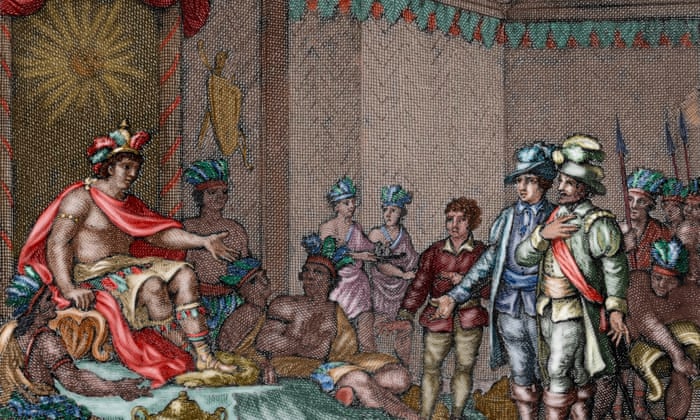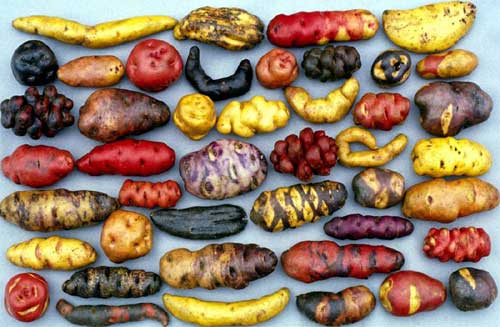You are using an out of date browser. It may not display this or other websites correctly.
You should upgrade or use an alternative browser.
You should upgrade or use an alternative browser.
The Sons of Inti Shall Not Perish
- Thread starter King of the Uzbeks
- Start date
It's going to be funny watching the Spaniards reaction when they get thrashed by not only the Quechans, but also the Mapuche.
Also since the Quechans are going to do better in this tl, I have a feeling we might see another, "Tupac Amaru" who revolts and carves out his own Inca Empire, during Spanish decline.
¿when you return to post?
Please don't. This just gives everyone false hopes. PM the author.
Chapter 2.7: Settling In

The Spanish awkwardly trying to avoid praising incest without offending the Sapa Inka
For their part the Spanish were disgusted, for however inbred European monarchs could get, sibling marriage was still well outside the norm. However Castro was not particularly concerned with the pregnancy, preferring instead to focus on integrating the newly acquired lands into the Spanish realm.
In a pragmatic attempt to try and spread out his enemies he gave much of the property gained to those ill deposed to his rule, with the added bonus of staving off any resistance with his donations. This was somewhat successful. Many quickly embraced the fine art of absentee landholding, meaning his efforts to spread out potential rebels had limited effect. However the bribe, for lack of a better term, of more land mollified the discontents for the time being. Independent trade between the new lands and the Tawantinsuyu was still technically forbidden, but Castro had little way of enforcing this. A low level black market emerged, although most cross border contact remained between peasants on both sides. Plague and occasional outbursts of violence meant that many fled back and forth across the border, attempting to find some semblance of safety.

This era saw the mass introduction of the Papa to Europeans
The estates now mostly established, the Spanosh turned towards the actual act of extracting wealth from the land. Some were lucky enough to find rich deposits of mineral wealth in their new lands, and immediately began exploiting the natives of the land. Taking a page from the book of the Tawantinsuyu they began requiring labor from those living in their property and sent them to work in the mines. Despite Castro trying to enforce the New Laws, which attempted to tone down abuses and as such were unpopular amongst colonial land holders, conditions were still brutal and death rates remained high. Disease swept through, a terrible constant, and kept killing. In regions where local landowners got too greedy crop failures occured as men were sent from the fields to the mines. This naturally lead to famines, which killed even more people. Of course not every Spanish landowner lucked into land with a valuable substance underneath, and so had to find some other way. Some took the route of growing foodstuffs to feed the colony. Tawantinsuyu food stores had been depleted by years of chaos, with little opportunity for restocking. There was also the growing markets of Tumbez and San Miguel, which had little in the way of food supply. The merchants of Panama hiked up the prices on food, hoping to assert some semblance of control over Nuevo Oaxaca, leaving landowners with an opening to sell their products. Said products ranged from European crops to native plants such as the Papa[1].
Another native plant also caught the attention of ambitious Spaniards, although it was not a food. For centuries natives had chewed the leaves of the Coca plant and made tea with them. It served as a natural stimulant that helped ease exhaustion and hunger, as well as helping with altitude sickness for those subjects that were not acclimated to hights. Early Spanish explorers condemned it as the tool of satan, but it was low on their list of priorities. When peace was initally forged Atahualpa sent Charles V a sample as a gift. The Holy Roman Emperor had found the supply enjoyable enough, helping a tiny bit with the enormous stress he was under. He requested another batch, which was duly retrieved and would enjoy it on occasion, although it would not spare him from the events that conspired against him. The emperor's (frankly overstated by many) taste naturally inspired a bit of a trend amongst the nobles of the various realms he ruled, which produced even more demand. Even as the initial clamor of court moved to other things Coca still found a place in European markets as nobles became acquainted with its effects and found it appealing.
Natives had used Coca well before Europeans arrived
Coca had been grown in large quantities among the Andean peoples before, but the increased demand combined with Coca production falling due to chaos meant that there was an open market for the leaf. Soon enterprising Spaniards were seizing every tree they could find to produce the stuff. Most were novices and relied on native help, almost always involuntary, to get their plantations going. A great many found it to be unprofitable, having little to no business acumen, and the rush to sell raised supply well above demand, as despite its modest popularity Coca had not yet come spread across all of Europe and the quality of a leaf greatly deteriorated over the course of the large trans-Atlantic. The most successful "Comedores"[2] were those who did not immediately invest totally in Coca, but instead established enough other agriculture that they could feed their plantations without dipping into the profit from Coca. This gave them a far stabler base and so it was these prudent men who came to dominate the trade. The Comedores found a market in the native populations of San Miguel and Tumbez, tying them far closer to Castro then they had expected prior to being granted the lands.
Having pacified his opposition internally Castro now enjoyed a powerful position, that even the efforts of the Audiencia of Panama could not tear down, and indeed the rise of Coca helped tame their rampant lust for control over the south. Unlike gold, royal authorities had not yet exerted full control over the commodity, which gave the merchants who dominated Panama something to sell. They still desired a more pliable man then Castro in charge of Neuvo Oaxaca but, no longer desperate for immediate change, relaxed their efforts to strangle the colony.
Of course all factions agreed that mass conversion of the natives was needed, and landowners of all types heavily pushed Christianity onto their new subjects. The chaos of European contact and failure of the theoretically divine Sapa Inkas to protect the people did grant them an opening, but all too often attempts to force religious uniformity backfired. The most conversions ended up sticking where syncretism was allowed, but these places were far and few between. In general Spanish efforts to spread the gospel moved slowly in Neuvo Oaxaca, a direct contrast to what was happening in Buen Ayre.
...
1: Known to OTL as the Potato.
2: Shortening "comedores de hojas" or "eaters of leaves", which is not at all descriptive of their activities, but such is the way of things.
Last edited:
hoping this TL isn't dead!
My computer died in me early in the summer, which turned out very busy. It's been too long.
¿when you return to post?
Now.
We should sacrifice a conquistador to Inti just to be sure that Castro doesn't go ape shit. I wonder how Native merchants will take advantage of this massive demand for cocoa, also what about Llama wool being a famous fad of clothing?
Wow, nice!

Beautiful, and more appropriate than a plastic bag full of half-crushed leaves.1). That is one giant photo of coca.
Cocoa? Someone in New Spain grins evilly.He who controls the cocoa, controls the universe.
Share:
